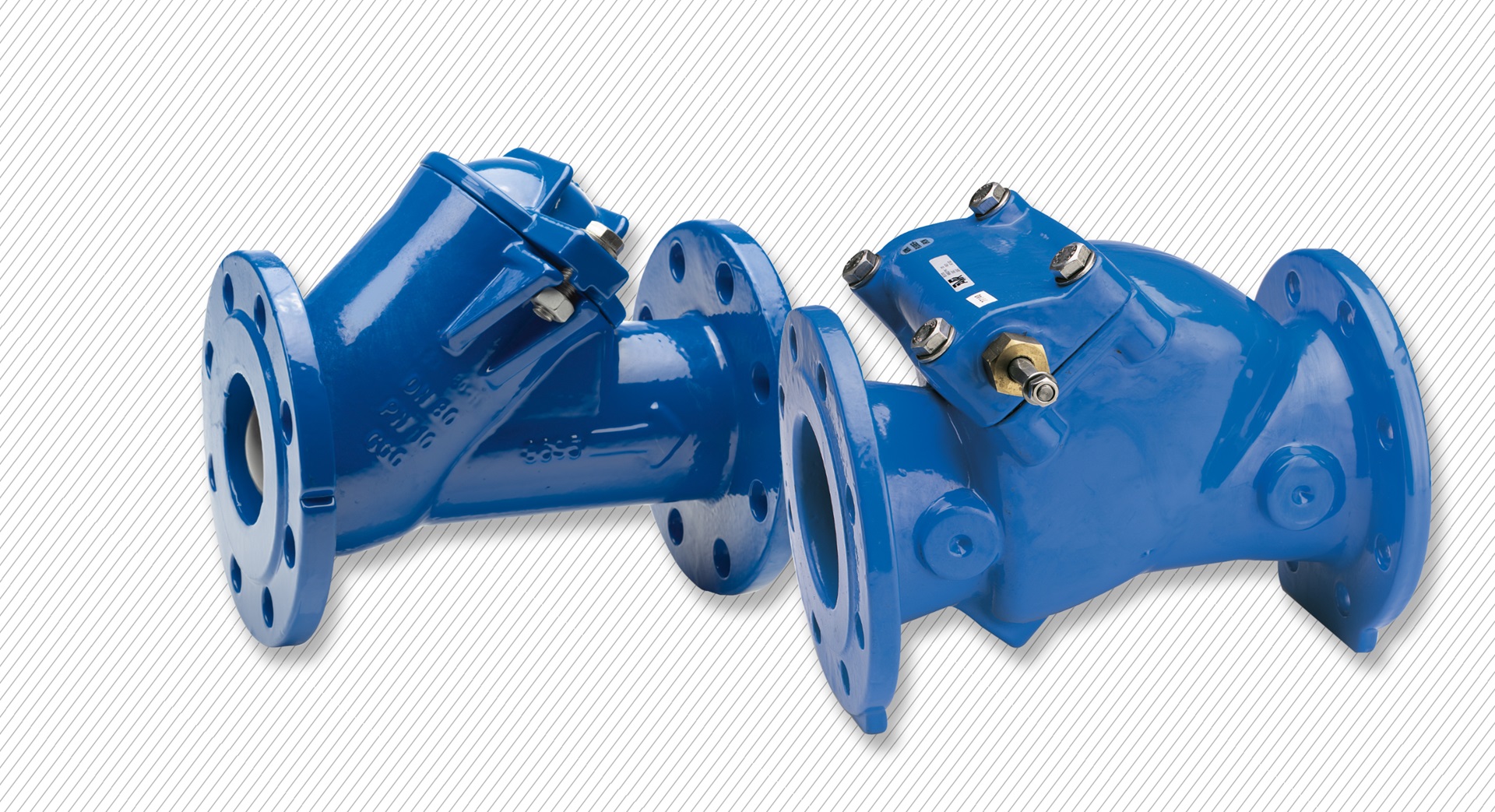
Choosing the right check valve
In order to be able to choose the right check valve for your application there are a number of selection criteria you should consider. First of all, there is not one type of check valve being the best choice for all applications and different selection criteria may not be equally important for all cases.
Some of the things you may need to consider are fluid compatibility, flow characteristics, headloss, non-slam characteristics and total cost of ownership. For optimal performance, it is of course important to choose your valve respecting the characteristics of each specific installation.
In general, ball check valves are simple and cost effective. Advantages are their compactness and the fact that they have no external parts which helps keeping the price low and the reliability high. A disadvantage may for some applications be that they do not have an open/close indicator. For more details, please visit the section about ball check valves.
Swing check valves are the most common check valves. They are inexpensive and as they are automatic they do not require any external power or control to operate ¨C only the flow direction determines the valve operation. Swing check valves with closed bushings do not have an open/close indicator but often the valves are mounted with lever and weight or lever and spring which enable visual check. For more details, please visit the section about swing check valves.
Read more about our check valves.
Some of the selection criteria to consider when choosing your check valves
Fluid
All check valves are designed to handle water and treated wastewater but handling of raw waste water/sewage may cause some issues. When selecting a valve for these fluids, you should probably consider how the presence of solids may potentially affect operation of the valve.
Flow characteristics
If a check valve closes very fast, it may prevent slamming. However, the rapid closure will not protect against the surges caused by pumps being started and shut down. If the valve opens (and closes) quickly, the flow will be changed suddenly and surges will more likely occur.
Headloss
Headloss is a function of fluid velocity and the valve headloss is affected by the flow conditions of the system and the internal surface of the valve. The geometry of the valve body and the closure design determines the flow area through the valve and thereby also affects the headloss.
The headloss to be considered is a combination of static head (caused by elevation difference) and friction head (caused by the internal of the pipes and valves). There are a number of formulas for headloss and rating of valves based on this. The most common is probably the flow coefficient of the amount of water passing through the valve at a certain pressure drop during a certain amount of time. However, for comparisons the resistance coefficient Kv is considered the best choice.
Both ball check valves and swing check valves have low headloss.
Total cost of ownership
The costs for your check valve may consist of more than just the purchase price. For some installations, the most important costs may be purchasing and installation but in other cases maintenance or energy costs may be equally or even more important. When considering costs as a selection criteria for your check valve, the total costs over the life of the valve should therefore be considered. In general, the more simple the valve construction is, the lower are the maintenance requirements. Both swing check valves and ball check valves are very cost-effective.
Non-slam characteristics
Check valve slam results in system pressure surge. First step of the process is when the pumps stop and the flow is reversed. That may cause some reverse flow through the valve before it gets to a fully closed position. Then the reverse flow is shut off and the change in flow velocity turns the kinetic energy of the fluid into pressure.
A slam sounds like if the disc or the ball from the check valve is hitting the seat and can make quite some noise. However, the sound is not caused by the physical closing but by a sound wave arising from a pressure spike stretching the pipe wall. To completely avoid slamming, the check valve should close before any reverse velocity can occur. Unfortunately, that does not happen. The geometry of the valve decides how much reverse flow will occur so the faster the valve closes, the less slamming.
As swing check valves have the disc in the flow stream helping with rapid closure, they have better non-slam characteristics but today most pumps are frequency converted enabling them to adjust the start-up and closure time in order to avoid water hammer.
Check valves can be installed both horizontally and vertically. Slamming may be a bigger issue for vertical installations since a vertical flow reverses more rapidly but a vertical installation allows gravity to assist in closing the valve rapidly.



